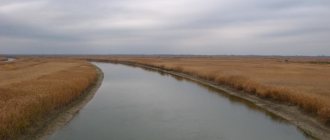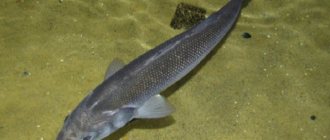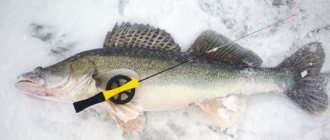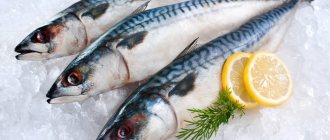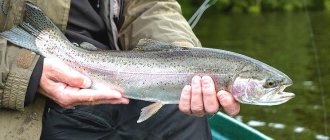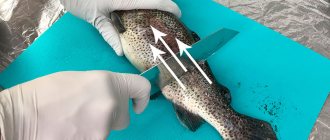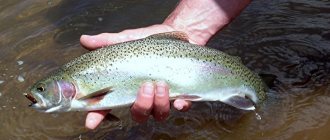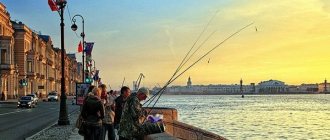Trout fishing in the Canyon
The CANYON recreation and fishing park invites you. Everyone, for trout fishing in the near Moscow region.
The reservoir is open 24/7
Cost of tickets in winter:
Deposit 500 rub. Definitely in cash!!!
Bait of all types, except bloodworms, is PROHIBITED! The reservoir is open 24 hours a day.
In winter, it is allowed to use 4+1 (4 liabilities and 1 active). Passive no more than 2 hooks.
Additional PASSIVE tackle 250 rubles, but no more than 2 pieces.
IF YOU ARE WITH YOUR WIFE AND WANT TO FISH WITH 2 ASSETS - AN ADDITIONAL ASSET IS 500 RUBLES.
Those accompanying a fisherman who has purchased 1 ticket (1 woman and children under 12 years old) have the right to free fishing using the equipment of the ticket holder.
Rest and fishing service for 12 hours. – 2500 rub.
- Valid from the moment of arrival. Without quotas for trout, whitefish, and sturgeon.
- Stocking of trout DAILY, 4 kg per ticket on weekdays, at 8 am.
Recreation and fishing service for 24 hours. – 4000 rub.
- Valid from the moment of arrival. Without quotas for trout, whitefish, and sturgeon.
- Stocking of fish DAILY at 7 kg per ticket at 8 am on weekdays.
Hourly recreation and fishing service (only in the Main) - 300 rubles/hour.
- Fish is paid according to the price list (trout 550 rubles/kg, carp 250 rubles/kg, sturgeon 1100 rubles/kg, whitefish 850 rubles/kg).
THERE IS NO TRANSITION PACK.
Rest and fishing service for 12 hours. – 2500 rub.
- Stocking of fish DAILY, at 8 am, 4 kg per voucher.
- Catch rate - Full unlimited.
- Tackle: 2 passives (for now) + 1 active.
On weekends extra. launch (see announcement on the website!!!)
The desired trophy of many fishermen is trout, which is found in cold-water lakes and fast rivers of Russia. However, you don’t have to look for fishing spots and travel hundreds of kilometers from the city. Now everyone has access to trout fishing in the Moscow region on paid platforms . That is, in improved reservoirs in which a variety of fish live. The Canyon Recreation and Fishing Park is just such a place - it ranks first in the ranking of the best paid sites for trout , and this says a lot!
Where to go for paid fishing in the Moscow region?
There are quite a lot of places for fishing in the Moscow region, some of them are located in close proximity to the capital, others will have to be reached by several means of transport.
There are both paid and free reservoirs. The latter will be discussed in this material.
Advantages of "payers" in the Moscow region
- equipped places;
- regular stocking of fish;
- guaranteed catch;
- the opportunity to relax comfortably on the territory of the base, including staying overnight. Also on the territory of many bases there are places for cooking meat on fire, gazebos for picnics, houses and playgrounds.
List of the most popular "paysites" in the Moscow region
- Funny Fishing (Kapustino village);
- Pirogovo;
- KRH "Sosenki";
- KRH Belaya Dacha;
- KRH Savelyevo;
- Fish farm Gzhelka;
- Royal Fish (Dubki village);
- Aleshinsky Pond (Aleshino village);
- Cool place (Losiny Ostrov) and others.
What kind of fish can you catch?
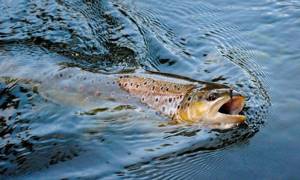
What kind of fish can be caught in the Moscow region “pay zones” not far from the Russian capital? Here is the list:
- Trout
- Sturgeon
- Pike
- Bream
- Som
- crucian carp
- Gudgeon
- Roach
- Ruff
- Tench
- Silver carp
- White amur
- Carp
- Perch
Places where you can go fishing for a fee in the Moscow region without a catch limit

Let's first figure out what the concept of “catch rate” is? According to the Code of Administrative Offenses of Russia, this means a fish catch per day per fisherman.
On paid fishing grounds, this means that in a certain place a fisherman can catch a certain amount of fish, use a limited number of gear, etc. Excessive catch is paid according to the tariff.
The list of paid ponds, lakes and fisheries in the Moscow region, where you can fish without a catch limit, is also large, so every fisherman can easily choose an interesting place for fishing and recreation.
Here is just a small list of interesting and popular places:
- KRH "Belaya Dacha";
- "Ikshanka";
- "Maximikha";
- "Bykovka";
- pond in Shapkino;
- KRH in Pirogovo;
- payer in Tarasikha;
- "Funny Fishing";
- Savelyevo;
- “Trial Russian fishing” and many others.
Tactics and methods of fishing
Fishing with a float rod
Fishing for trout with a float rod Any float rod is practically suitable for trout fishing;
The longer the rod, the better, since it allows the bait to be cast further, and the angler not to come close to the water and thereby unmask himself. The rod should be fairly light (since you have to hold it in your hands), with a rigid tip and running equipment. Any simple reel with a small capacity drum is suitable. The fishing rod is equipped with a fishing line with a diameter of 0.20-0.25 millimeters with a leash up to a meter long and a slightly smaller diameter. An inconspicuous fishing line, for example, light blue, is desirable. Hooks No. 6-8. Usually they put one hook, but if the bottom is muddy or peaty, it is advisable to have two hooks on separate leads with a distance of 15-20 centimeters between them. It is assumed that the lower hook can sink into the mud and then the upper hook will work.
Sinkers - ordinary pellets or lead tape. They are attached 7-10 centimeters from the hook or between the hooks. The float is better spindle-shaped, small and dim. A spherical cork float performs well in currents and strong winds. Trout usually pulls the bait into the depths and does not lift the sinker. Therefore, no additional shedding is required.
The most common bait is a dung worm or subleaf, and the redder they are, the better. Small and medium-sized trout do not pay much attention to the quality of the worm, and they can be caught with half a worm, which is resorted to, for example, by fishermen of the Kola Peninsula, where this bait is quite difficult to obtain. For large trout, you need a whole and mobile worm. The worm is attached in any way, but so that the hook tip is closed.
If there are no worms, you can use insect larvae, small pieces of fresh fish or the insides (intestines, for example) of the same trout. In the summer, when fishing by floating, large insects are considered a good bait, and closer to winter, for large trout, even fry.
Trout fishing does not tolerate fuss, noise and haste. Usually, beginners behave carelessly: they noisily approach the water, immediately adjust the gear, and do not constrain themselves in their movements. All this alarms the trout, and it hides in secluded places, not reacting to the bait for a long time.
This is not what experienced fishermen do. They are preparing gear about ten meters from the water's edge. On an unfamiliar body of water, they will inspect the shores and adjacent areas of the water surface, evaluate possible trout parking areas, and only after that they approach the chosen place silently, bending down, and if necessary, crawling, diligently camouflaging themselves. They know that it is the first casts, unexpected for the trout, that often lead to the capture of the largest individuals. Where should an angler with a float rod go? There are many options. In lakes, these are the mouths of rivers and streams flowing into them, underwater vegetation with gaps, scatterings of stones and individual large stones protruding from the water, deep shores, especially if branches of trees, bushes or stems of tall grasses bend over the water, washed away peaty and covered with thick moss sections of the coast. On rivers there are also borders of fast and quiet streams, reaches behind rifts, holes behind waterfalls, areas of quiet water behind large stones. The chosen fishing location must also be assessed from the point of view of camouflage capabilities.
With a float rod, trout are caught vertically from the bottom, by swimming and using a slowly sinking bait.
Fishing for trout vertically from the bottom
When fishing vertically from the bottom, the bait should be located directly at the bottom, but not lie on it, otherwise the trout may not notice it. The depth gauge scares away the fish, so it is not used when adjusting the descent along the float. As you know, fish notice faster and more willingly take a moving bait. Taking this into account, the float is periodically pulled to the shore by 15-20 centimeters and is not prevented from being blown away by the wind until it shows that the bait has fallen to the bottom. Then, after making a light hook, the tackle is thrown back to its original position.
You need to fish the selected area in a certain order along an arc, starting from the closest distances, then the trout located further away will not be scared. Each cast must be aimed, and the less often they are, the better.
The trout bites quite confidently. The float twitches several times and then goes into the depths. You need to hook when the float begins to sink, quickly and decisively, since the trout, having felt the hook, quickly spits it out. If the tackle is reliable, then in one movement the trout are thrown ashore. When hooked correctly, it rarely leaves the hook. The line must not be loosened. Slowing the release causes splashes of stubborn trout, which spooks other fish. Large trout are caught using the usual techniques, without lifting them from the water to the surface. She resists strongly, but not for long. Having dragged the trout to the shore, it is pulled out with a hook. A landing net is not used, as working with it scares away the fish.
When the bite is good, large and medium-sized trout show amazing persistence. If, after grabbing the bait, it is not hooked, a second “attack” on the bait is possible. Therefore, after an unsuccessful hooking, you should not remove the hook from the water for some time, and if this still happens, then, without adjusting the worm, you need to throw it into the same place where the bite occurred.
If within fifteen to twenty minutes there is no bite in the selected area or it has stopped, then you need to change the place, moving to the rear. However, the cessation of the bite does not always mean that there are no more trout. This is a sedentary fish, it does not move far from its habitat, it only hides. It would be advisable to return here in an hour or an hour and a half.
Fishing for trout by swimming
The method of fishing for trout by floating is characterized by the fact that the float together with the bait is floated downstream for the length of the fishing line and rod, while the bait is located at the bottom and can touch its unevenness. To ensure that the bait moves in front of the float, it is periodically held back a little. The fisherman releases the bait within sight of the float and returns it to its original position, reeling in the fishing line with a reel (or lifting the end of the rod up with a blind rig). Float fishing is used in places where rivers and streams flow into lakes, on slow flowing quiet reaches and on channels between lakes. If conditions permit, the angler can walk along the shore following the float moving in front of him, staying away from the water.
This method is especially successful when fishing at the mouths of rivers and streams at dusk, when the angler can take an advantageous position without the risk of being noticed by fish. The float in this case should be white for better visibility.
The nature of the bite can be very different, so you should hook every time the position of the float changes.
In deep areas of lakes and river reaches, trout often bite better on slowly sinking bait. This immersion is ensured by removing the sinker from the fishing line. At the same time, the bait, describing a certain arc, slowly descends into the depths until the fishing line straightens. The trout grabs the bait on the move and often hooks itself.
Trout fishing with spinning and fly fishing
Fishing for trout with a spinning rod Spinners catch trout with small rotating or oscillating spoons weighing no more than 10 grams, as well as with wobblers up to 10 centimeters long.
As practice shows, the largest trout can be caught most often in the spring. At this time, since the trout hunting season is just beginning, it is not yet very careful and can be found in relatively accessible areas. After the flood, the fish go to their so-called summer places, and large specimens are much more difficult to detect. At the beginning of the season, the best chance of catching trout is by moving the spoon slowly and deeply near the bottom. Since this technique requires the bait to be relatively heavy, it is quite difficult to catch trout in the spring using fly fishing. Sometimes this can be done using sinking lines, using various artificial larvae, nymphs, and also flies that imitate fry—streamers—as bait.
In spring, preference should be given to shallow bodies of water. Sometimes on warm afternoons you can see trout there, hunting for insects floating on the surface of the water. That is why at such times you can even try fishing with a dry fly.
The chances of spinning rods and fly fishermen increase significantly in May and June, when it gets warmer, willow blooms along the banks, and marigolds bloom in the meadows. With the warming of water and air, insects appear in abundance, and nymphs appear in the reservoir. The trout are becoming very active. It can be found in all layers of water, and circles that excite the fisherman’s heart spread across the surface. At this time, the trout are finally distributed to their summer places, where they remain until the fall.
Being a cautious fish, trout in summer feeds mainly at night, early in the morning or late in the evening, especially in spring rivers with clear water, and during the day it stands in shelters, often in those near which there are suitable hunting grounds - rifts, rapids, eddies. Large individuals (weighing 1 kilogram or more) actively hunt almost exclusively at night in the summer.
If the angler manages to determine the trout's parking spots, he will ensure his fishing success for some time. However, finding a parking lot and establishing the pattern of distribution of trout in a reservoir is sometimes difficult - it requires patience, perseverance and skill. At the same time, experienced anglers know well that finding trout sites does not mean catching them. It is not without reason that when catching large specimens they use a method borrowed from red game hunters. First, they determine where the large fish are kept and study their behavior. Then they conduct a targeted hunt only for this specimen. This tactic is justified: a large fish has obviously seen a lot in its life and can be alerted by any wrong step - a careless approach to the place where it is holding, a careless cast or a suspicious bait.
Trout are easier to catch when they are actively hunting. During feeding, she grabs almost everything that moves, behaves less cautiously, and often pursues prey at a great distance. It is very active during mass flights of insects, especially mayflies, but a good bite can also occur simply when the weather is favorable. Thus, warm summer days with light drizzle are highly valued by trout fishermen. The bite also improves after short-term heavy rains, which cause slight turbidity in the water in the river. Severe cloudiness usually leads to the opposite effect.
Not only the quality of a spinning rod or fly rod, but also shoes, clothes, a fish basket and other “little things” affect the results of fishing. Trout fishing does not tolerate negligence and sloppiness either in the preparation of gear or in fishing technique. The smaller the river and the lower the water level, the more carefully you need to approach the place where the bait will be thrown. If the angler feels that the trout has noticed him, it is advisable to leave this place for a while, let the fish calm down and return there after a while.
Trout is usually caught from the shore or by wading. Most often they walk along the shore, and if necessary they go into the water. When hunting with a spinning rod, they move upstream, and pull the spoon downstream or slightly across. The fact is that trout usually keep their heads against the stream, so it’s easier to sneak up on them in this way. And the bait behaves more naturally.
Bait is thrown downstream only when there is no other way out. For example, in areas with moderate or strong currents, relatively light trout spoons are usually difficult to move against the current: it lifts them to the surface or even throws them out of the water.
Fly fishing for trout Fishing while moving downstream requires especially careful camouflage. Some exception is only fishing on a floating wobbler, which floats on the surface in a calm position and sinks only when pulled up.
The wobbler is thrown or in some cases simply floated downstream and then pulled up. Of course, such tactics are used only in places with low current speed.
When fishing with a spinning rod, you should always strive to ensure that the bait reaches the intended point in the first cast. If this fails, the probability of a grasp further decreases or becomes equal to zero. When casting a spoon, you need to imagine where the trout might be at that time, and lower the spoon in such a way that when pulled out, it passes quickly enough past the fish. In most cases, it is better to move the lure close to the trout.
It is very important, especially in summer and in shallow waters, that the spoon plays immediately after immersion: during periods of activity, trout often rushes for the spoon immediately after it touches the surface of the water.
The casting distance is not significant and in medium-sized rivers varies between 10-20 meters. Casting accuracy is more important. At a distance of 10-20 meters, deviations from the target should not exceed 1 meter.
When choosing spinners, you should give preference to rotating ones, of different sizes and weights, imitating a small fish or a large insect caught in the water. It is enough for a fisherman to have four or five spinners of different models and weights. Too large a set of baits, as a rule, rarely helps, especially for a beginner.
For trout fly fishing, as a rule, light tackle of class 5-6 is used; Only when hunting for large fish - weighing over 1.5-2 kilograms - is 7-8 class gear used. Depending on the conditions, the diameter of the leash is chosen from 0.15 to 0.25 millimeters. To increase fishing efficiency, some fishermen tie not one, but two or three flies to the undergrowth in such a way that the flies at the end of the leash are immersed in the water (wet flies), and the top one remains on the surface (dry flies).
If a fish takes one of the wet flies, this is immediately reflected in the behavior of the dry fly, called a “jumper”.
The beginning of the trout fishing season (in the western European part of the country this is usually April - June) is characterized by the fact that the water temperature has not yet reached its maximum, trout hunt with ever-increasing activity. Its diet includes aquatic insects, fish, and frogs. The most preferred fishing time is afternoon.
The middle of the season (July - August) is characterized by significant warming of the water; The trout diet consists of nymphs and terrestrial insects. Trout activity occurs mainly in the early morning and late evening.
The end of the season (September) is characterized by a new surge in trout activity. At this time, it feeds on small aquatic and terrestrial insects.
At the beginning of the season, trout stay near the bottom in calm places and hunt for relatively large prey.
Fishing using a streamer
The greatest success can be achieved if you use a streamer as bait - a large and heavy artificial fly that imitates a fish or some other creature. Streamers are made of two types - from the feathers of various birds or from the bristles (fur) of animals. They are knitted on hooks No. 5-10, in which the length of the shank is 3-5 times greater than the width of the hook. Streamers are an effective bait for catching not only trout, but also pike, perch, taimen, etc.
For streamer fishing, use a 7-9 class rod and line. Casting is usually performed across the river flow. If the river is deep - a little upstream, if it is weak or the river is shallow - a little downstream. Then they allow the streamer to swim freely and, after exiting the arc, pull it towards itself with small jerks. During the swim, the streamer can be made to play by raising and lowering the rod tip or tightening and releasing the line. Streamers can be sent to the most inaccessible places, so they manage to seduce fairly large individuals.
As long as no splashes of fattening trout are visible on the surface of the reservoir, a dry fly has little chance of success, so wet flies are more often used in the spring.
Fishing for trout during the mayfly season
Trout fishing during the mayfly season The most interesting fly fishing is associated with the mass emergence of mayflies.
Small mayflies appear in small numbers immediately after the rivers open, while mass emergence occurs at different times. The largest - May mayflies - appear at the end of May or June. Depending on the development cycle, the mayfly is eaten by trout in three forms - as a nymph, subimago and imago (adult insect). Before the mass emergence of mayflies, trout feed on nymphs, and at this time fishing with flies that imitate nymphs is most successful. When subimagos appear on the surface of the reservoir, trout are accordingly caught with a dry fly. Adult mayflies, especially the larger species, are a real delicacy for trout. When a mass emergence of mayflies occurs, the trout, in the excitement of the hunt, loses its usual caution, and the angler gets a rare opportunity to find out where they are staying. The most difficult task is not to miss this relatively short period, lasting no more than a week.
Depending on the layers of water in which fish are caught, light or heavy artificial nymphs are used. In severe cases, the abdomen and head are formed with the inclusion of a metal wire. The nymphs of some aquatic insects actively swim, so you can play with a nymph fly in different ways. During the current, it is calmly launched into the stream and slightly suspended with short movements and small jerks. In quiet places the nymph is led faster. The main thing when fishing trout with an artificial nymph is hooking. It has to be done most often when there is barely noticeable movement of the undergrowth or suspicious behavior of the fish in the place where the fly is located.
Another important point: the angler must ensure that the position of the fly on the surface of the water is the same as its natural prototype. As a rule, this is achieved by careful selection of the materials used to make the fly and the optimal way to knit it. This is not so simple, considering that the choice of suitable materials is not always sufficient.
All mayfly flies consist of four main elements - the tail appendage, the abdomen, the wings and the feathers. True, recently flies without feathers have appeared. By choosing the appropriate colors of elements, materials and sizes, you can knit a mayfly that imitates the one that is flying at a given time. Anglers with some experience sometimes do this right next to the pond, after they find out which insects the trout prefer.
The fly must be moved so that it imitates the movements of its natural prototype. If the insect being depicted is drifting on the surface of the water, the fly can simply be set with the flow; if an insect “runs” along the surface, sits on it and takes off again, and also makes some movements, you need to try to give the same movements to the fly. It all depends on the fisherman’s observation and his ability to control the gear.
If a trout is hunting for insects falling on the surface of the water, even idle casts can frighten it, as the fish sees the flying fly line. If you cast the fly higher than where the trout is staying, then the leash will also be in its field of vision. Therefore, if the angler does not know how to lower the leader into the water in an arc, it is best to “put” the fly a little to the side or lower from the trout’s position. After casting, you should never lift the fly line from where the trout is holding. In order not to disturb the fish, the line with the fly should be moved away and only then lifted and prepared for the next cast.
As the water warms, the hours for successful fishing are increasingly shifting to early morning or late evening. Among the baits, the proportion of nymphs, various fancy flies, small mayflies, caddis flies, dragonflies, and in wooded areas by the end of summer - ants increases. Catchable flies at this time include imitations of caddis flies. They are especially effective in the evening hours, even at dusk.
A good bait for trout fishing are the so-called fantasy flies, which do not have a specific living prototype. They are a figment of the imagination, which, as we know, knows no boundaries. Therefore, we can only recommend that anglers come up with and make the “best” models themselves and create a personal collection of flies that will help them compete with trout.
The angler should not have the impression that he can catch trout with a spinning rod or fly fishing almost at any time. Fishing opportunities decline at different times for different reasons. It is necessary to patiently and thoughtfully study the biology, behavior of trout, and the conditions of its existence, and then you can count on success.
Fishing for trout
Fishing is carried out both from the shore and by wading. The trajectory of the nozzle should pass through the deepest possible places, near coastal gullies, through whirlpools and under cliffs. Each of these shelters is carefully fished, passing the bait through it several times at different speeds and at different depths.
It is important to make the gear unnoticeable. This is especially true for fishing in places with laminar flow, where the water surface is relatively smooth and where any object moving along it immediately becomes noticeable. In such cases, you need to select the float especially carefully. Very colorful, brightly colored products that are deeply submerged in water are completely unacceptable. A plastic float in the form of a transparent ball, which is filled with a certain amount of water, would be more appropriate. It is noticed that the fish is practically not afraid of it and even tries to play with it, pushing its head against the current. Good results are obtained by wiring that is carried out without a float at all. Watching the fishing line, the fisherman makes hooks at the slightest disturbance in its natural movement in the water. It is clear that only people with excellent eyesight and certain experience can fish like this.
In order to make it easier to track the fishing line, you can glue a square of colored insulating tape measuring 1 x 1 cm onto it. It allows you to notice changes in the nature of the movement of the vein even for people with impaired vision, since it is clearly visible on the surface of the water and in the near-surface layer.
At the end of spring, when the northern reservoirs open, it is best to fish for brook trout using a fishing line without a float. To do this, you need a very simple tackle: without a float, but with a load of several round pellets attached about 30 cm from the hook.
The bait is usually an appetizing crawler. This bait is lowered to the bottom in all the holes and gullies of the river bed, in the water shadows behind all obstacles. The main trick is to walk along the bank of the stream all the time, hiding from the eyes of the fish, as it is very suspicious of humans. A trout bite can be seen by the slight movement of the fishing line itself. Give the trout the opportunity to better swallow the bait, wait a few moments with hooking, and hook the next decisive bite.
Trout fishing by trolling
To make a track, you need a main line 1-20 m long. On it, leashes with spoon lures at the ends are tied at a distance of approximately 9 m from each other. The main line held by the fisherman under the influence of the load is lowered to a depth of 60 m, and it is towed at a speed of one and a half knots. Curved silver-plated spoons are often used to imitate the movements of vendace, the immediate food of lake salmon. Mistaking the spoons for prey, the lake trout resolutely, without showing the slightest distrust, attacks them. At the greatest depths, they fish by trolling, using special Downrigger devices, which allow you to deepen the equipment with a wobbler or spinner even to 100 m.
Fishing for trout "Water kite" ("ship")
“Water kite” (“boat”) tackle, which in our country can be considered perhaps the most common when fishing for lake trout. However, these designs are not admired and approved by all fishermen. Proponents of “clean” fly fishing are extremely critical of the habit of some anglers to equip their “boats” with wet and dry flies. And spinning fishermen, who are not very prone to snobbery, often speak very unflatteringly about such fishing. Be that as it may, for a novice fisherman this is perhaps the simplest gear that allows one to hope for some success.
The “ship” can be launched both from the shore and from a boat. Also L.P. Sabaneev described craftsmen who, while in a boat, could navigate the “ship” almost in a closed circle. This allows the angler to place the bait in almost any potentially catchable area of the lake.
Most designs can use both traditional baits of animal origin and various types of artificial baits.
However, a novice fisherman should not forget about a sense of proportion and should not drag a couple of “ships” behind the boat like a track. It can be quite catchy, but will not earn you much respect in the fishing community.
Trout fishing in winter
Fishing for trout in winter The sound of a fisherman’s steps on the ice, and especially from a working ice drill, can be heard for several tens of meters.
The water at this time is very transparent, and the ice can also be transparent, which is why light and shadows penetrate under the ice and disturb the inhabitants of the reservoir. At this time, the task of outwitting the cautious trout becomes a matter of honor and skill of the fisherman. What do you need to know about the winter habits of trout?
- Firstly, it constantly moves around the reservoir, lingering for a fairly short time in certain places known only to it.
- Secondly, its movement occurs at half-water in different horizons - from 3-4 m to 20 cm from the lower surface of the ice. It is very rare to catch trout close to the bottom.
- Thirdly, the bite is highly dependent on the weather and fishing conditions.
- And, fourthly, trout at this time are exceptionally strong and agile; not every tackle can withstand it on a short leash. Hence the requirements for equipment.
In winter, trout can be caught in two ways:
- Sheer glitter.
- Using a float rod.
For luring, it is best to use jigs and jigs. The habitats of trout are known; they have not changed for years. In addition, modern scented baits actively collect trout in precisely those places where fishermen gather.
Trout fishing in winter is done with a fishing rod with a reel with a diameter of 6–7 centimeters, equipped with a “tulip” on the tip. The thickness of the fishing line is at least 0.3 millimeters. It will allow you to fish for trout without fear of loss. As practice shows, trout take not only large bait, but also do not disdain small ones. Therefore, you can use perch balancers. The hook for catching trout is, of course, a tee, decorated with a bright thread fly or a red drop. Fishing technique: short (up to 10 centimeters), with sharp lifts of the balancer alternating with lowering by a third or half of the lift.
Playing with bait like this gives results - you won’t leave without a fish. The fish can be at a depth of up to 2 meters or under the ice itself. By the way, sometimes a trout is hooked not in the mouth, but in other places - this is the result of the fish’s curiosity. Catching a trout is half the battle, hatching it is the job, but it’s not easy to do. This must be done firmly and quickly, otherwise her desperate resistance may leave you without joy.
The best places for paid fishing near Moscow
Let's consider several fish farms and bases in the near Moscow region, where a resident of the capital can go fishing. Based on feedback from fishermen, we have compiled a certain rating of such “payers”.
Some of them can be fished 24 hours a day, seven days a week, all year round. Prices for a trip vary from several hundred to several thousand rubles.
Pirogovo
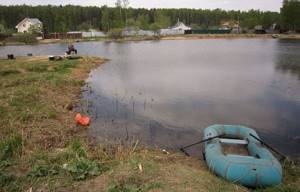
You can fish on the reservoirs of Pirogovo around the clock and at any time of the year; the cost of a trip varies from 1.6 thousand to 2.5 thousand rubles. You can fish without a catch limit.
The following types of fish are regularly released into reservoirs:
- carp;
- tench;
- pike;
- White amur;
- sturgeon;
- catfish;
- trout.
You can come here not only to fish, but also to simply relax with family or friends: there are barbecues and picnic tables, and you can also pitch a tent if you decide to stay until the morning bite.
The reservoir is located not far from Leningradka, getting there is not difficult both on weekdays and on weekends.
KRH "Sosenki"
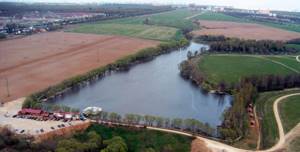
On this reservoir, located in the village of Sosenki, you can fish both in the morning and in the evening.
The cost of fishing in this reservoir is three thousand rubles. There are fishing standards.
You can use three tackles in one place, and specimens weighing five kilos or more are considered trophy specimens. Here you can rent a gazebo, and if you are not a member of the club, then buy a guest pass.
KRH Belaya Dacha
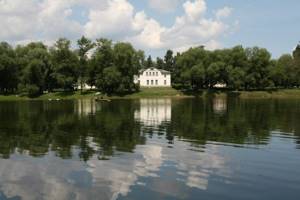
This nice fishing spot is located in Kotelniki, between the Moscow ring road and Novoryazanskoe highway. There are populated areas nearby, and getting here is easy because of the excellent transport links.
The five-hectare pond is very picturesque; on its shore is the ancient Arshenevsky estate. Here you can not only fish, but also take a walk. The reservoir itself is divided into two parts, in one of which you can catch trout, in the other - carp and pike.
You can also catch in the pond:
- sturgeon;
- whitefish;
- soma;
- crucian carp and other species.
Fishing is carried out without a catch limit; you need to purchase a permit. For female fishermen and children there are certain benefits. Trophy specimens of caught fish are considered to be those over five kilograms.
You can also rent barbecues and gazebos here. In addition, the White Dacha regularly hosts various events and competitions among fishermen.
"Flying Fish"
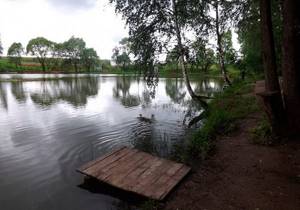
This pond is located in Khimki, in close proximity to Sheremetyevo Airport. Perhaps this is where the name of this reservoir came from; translated from English it means “flying (flying) fish.”
The pond is regularly stocked with fish, several times a week. Here you can catch the following species:
- pike;
- carp;
- crucian carp;
- tench;
- catfish;
- sterlet;
- silver carp;
- sturgeon;
- White amur;
- trout.
In winter, fishing does not stop.
A permit can be purchased for different times of the day, but on weekdays fishing costs much less. Than on weekends. The cost of the tour is from 800 rubles.
In addition, for relaxation on the territory of the base there are gazebos and barbecues where you can cook freshly caught fish.
Royal Fish
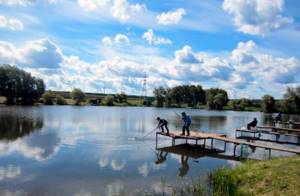
This cute place is located in Dubki. The pond, stocked approximately twice every month, stretches over six hectares.
Here, lucky fishermen can hunt for:
- carp;
- cupid;
- carp;
- pike;
- trout;
- crucian carp;
- roach;
- silver carp.
You can fish here in winter too. Becoming a member of the club is easy - just purchase a club card. Fishermen can automatically use barbecues and gazebos.
In addition, club members can use up to five different tackles while fishing, which is quite a lot.
"Trial Russian fishing"

This reservoir is located in the Chekhov district.
Fishermen come here for the following species:
- perch;
- catfish;
- pike;
- trout;
- silver carp;
- tench;
- carp;
- crucian carp; rudd.
The lake is regularly stocked with fish, so even a novice angler will not leave here without a catch.
In addition, there is another bonus - there are no catch limits.
Getting here is quite easy: the lake is only 60 kilometers from the Moscow Ring Road.
There are many places in the Moscow region where you can go fishing for your own pleasure. Prices vary, and some places can be reached without much difficulty. Where to go fishing near the capital is up to you.
What to catch trout with
Trout bait is varied in its composition and structure. The only feature that distinguishes these baits from baits for other types of predators is their miniature and small size. This is directly related to the physiology of the fish, which does not have a very wide mouth. In natural conditions, fish are more involved in gathering than directly hunting. A favorite pastime of trout is collecting insects that have fallen to the surface or picking up floating food in the water column. Fish are sensitive to attractants, especially the tastes of fish oil, shrimp and fish fillet itself.
In addition to insects, the predator likes to feast on worms, bloodworms and maggots, which floaters often use, and will also not refuse pieces of fresh fish meat, shrimp or crayfish. But the greatest interest of anglers is caused by the possibilities of hunting fish using artificial baits, the most popular types of which we will present in the continuation of the article.
Wobblers
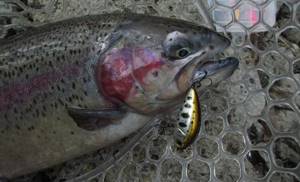
Trout wobblers are used in spinning fishing and predator fishing using a bombard float. The best options for this kind of bait are cranks, with the ability to play their own game, which is distinguished by its fine frequency and the creation of a strong vibration wave, which causes additional interest in nearby fish. Wobblers of small masses from 2 to 10 grams with bright colors, which are preferable for contrasting highlights on gray and black tones in the form of dots, are carried out on uniform movements in different water horizons, looking for promising levels of fish parking. During the period when predators are feeding from the surface of the water, small-sized poppers are ideal for fishing. Retrieving surface baits is carried out in a jerking manner.
Spinners
This type of bait is applicable in shallow waters where water levels do not exceed 3–4 meters. Mepsian pinwheels with oval petals, the Aglia type, of the smallest size are considered a classic hunting tool. By analogy, trout fishing enthusiasts select baits from other brands or make spinners of a similar type on their own. Typically, silvery petal base colors with dots of red and blue are the most catchy. The spinners are driven through the water column at medium speed, without pauses or stops, with the tool lowered to the bottom. Lake trout bite in the water column, attracted by the vibration and glimpses of the petal.
Microoscillators
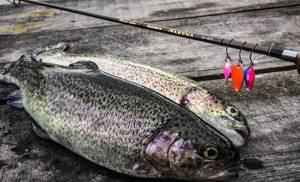
This type of spinner is no less popular than spinners, and in terms of color design, promising spinners are similar to the rotating type of spinner.
Important! The trapping tool must have a distinct point of attack.
In combinations with a spinner, flies are used that are attached to the tees of the spinner itself or launched on a separate leash next to the leading bait. An excellent example of a spinner for trout fishing is the castmaster spinner, the wiring of which is done in the water column in the form of a step in a calm and non-aggressive style. Trout spoons rarely exceed a mass of 10–12 grams and a length of 4–6 cm.
Silicone baits
Silicone simulators of all kinds of small fish, insects and aquatic inhabitants are a fairly catchy and inexpensive bait for trout. In trout fishing, silicone is used both as the main bait and as an auxiliary bait, retrofitting them into the tees of spinners. Silicone is served on stationary jig heads or in spaced equipment.
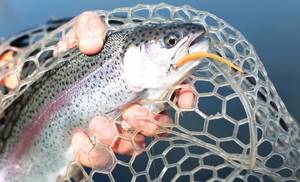
As a rule, the length of artificial fish does not exceed 5–7 cm, and vibrotails look more preferable for a predator. Slugs in the form of worms and crustaceans have also established themselves as forms of particular interest to predators. The use of edible rubber with the smell of fish oil and meat, especially in the autumn, significantly increases the number of attacks by predators. Silicone in eye-catching, unnatural colors is suitable for trout fishing. Postings are carried out using the jig fishing method, trying to make steps without the bait touching the bottom.
For trout paste
One of the innovative types of trout bait is paste. This plastic bait is made on a base of plant dough, in which manufacturers include various elements that attract trout to the fishing zone with their scents. Each manufacturer has its own recipe for preparing the composition, the ingredients of which are kept secret. Fishing practice shows that the bait can be considered universal, used in float, spinning and feeder fishing throughout the year. Fishing for trout in winter on ice from ice also cannot be done without the use of paste; choosing from a wide range of scents and colors, you can always find the key even to fish that are passive at this time of year.
Important! Trout paste is used to make balls and shapes in the form of worms and fish, which are used to equip hooks.
Incredibly distinct color schemes complement the taste appeal of the paste, making it a must-have attribute of trout hunting.

